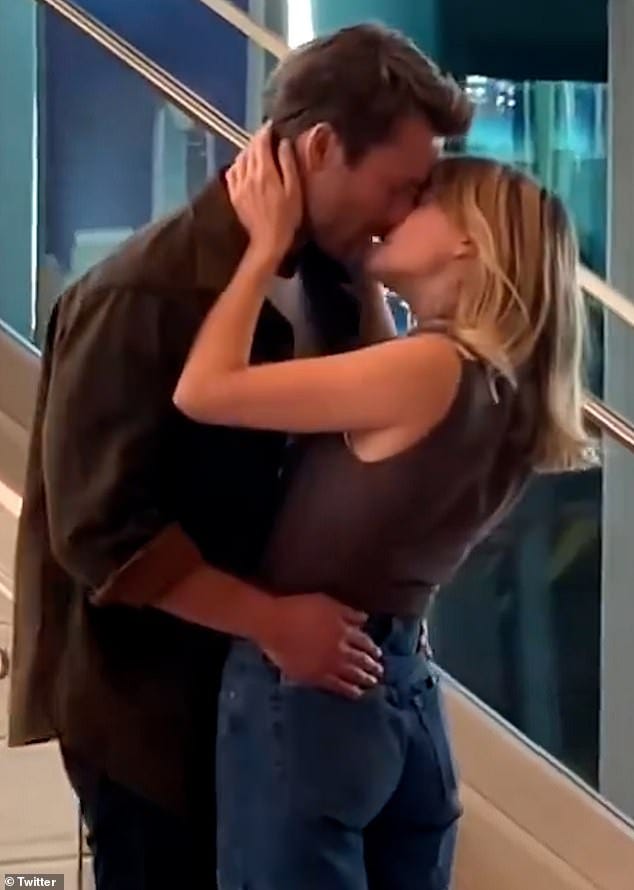Writing Romantic Intimacy
A how-to guide for scenes of all heat levels with open door romance author, Ruby Barrett
romantic intimacy: an overview🌶️
guidelines on writing intimacy😘
common pitfalls🥵
resources/fact check 📋
next week 👁️👁️
1. romantic intimacy: an overview🌶️
Good morning, Team Curiosity! Or, since this is absolutely a TTS After Dark episode, good evening. Grab some wine. Get comfy. Maybe have some rice nearby, because it’s about to get sPiCy! 🌶️🥵
Longtime listeners know we’re huge romance fans here at TTS. Lyssa struggles to consume stories without romance (she will—under duress). When each of us started writing, we gladly included romantic subplots in our fantasy stories, if not writing outright romantasies.
Anna has been pretty open about her “pizza box” fears: in early drafts, she worries her love interest reads as flat as a pizza box. And Lyssa—in all of her “no one has read this; therefore it’s perfect” glory—crafts dramatic romantic scenes in her early drafts… only to discover that her CPs eyes are glazing over with boredom when they read them.
Enter Ruby Barrett, a friend of the pod, and Lyssa’s long time CP. Ruby has several traditionally published—and indie pubbed—open door romances, along with a few published erotic short stories. Why do we mention her accolades? Because Ruby is really good at writing intimacy. Like, ridiculously good. She helped Lyssa revise Revelle before she signed with her agent, and she’s our go-to person for advice whenever we’re writing intimacy. When we asked her on the pod to lend her expertise to us, she more than delivered. Let’s dive in!
2. guidelines for writing intimacy 😘
In this episode, Ruby throws down a TON of knowledge. It’s truly worth a listen. But if you’d like the Cliff Notes, here you go:
Set your shame aside: Before you begin writing intimacy, it’s worth thinking about your own attitudes toward sex and physical intimacy. If you were raised in a culture that considers desire shameful, you may have a hard time shaking that while you write. Shame can rear its ugly head in the form of silliness and discomfort. It can feel like imposter syndrome (“I have no right writing this!”). Regardless of your starting point, challenge your shame so that you can proceed. If it remains unchecked, you’re at risk to hold back in your scenes in a way that hurts your craft..
Consider what level of heat your story needs: Intimacy is a spectrum, and there are readers for every notch in this spectrum. Your comfort level in writing might be similar to your comfort level in reading. Also, consider what heat level best fits this story. If you’re writing a Hallmark-esque movie versus an erotic dark romance, for example, your heat level is going to vary accordingly. Don’t pressure yourself to get spicy if that’s outside your comfort zone—or your genre!
Ask yourself: does this intimate scene alter the story? Does it lean up against the characters’ emotions in an important way? Does it bring the relationship closer? Further apart? A rule of thumb for many romances (and certainly for romantic subplots) is that spice in romance should be integral to the story. It should make the story move. Make your characters change. Make your stakes greater. Whatever it is, it should be important! This is a rule that can be broken, but we recommend mastering it first. And if you ignore it, the average reader might feel bored (or even gypped) by sex that has no impact on your story. Alternatively, skipping an intimacy scene when the story has led you to believe there would be one is also a rip off! I’m looking at you, Twisters. And also you, S1 of Shadow and Bone).
Ground your scene in the micro. Consider the details. What unique things does your POV character notice that set this moment apart from any other? Intimacy is built on these tiny little details—the micro instead of the macro. Examples: a hand brushing here, the scent of shampoo, the feel of a breeze on bare skin. Interior thought can be micro and grounding, too.
Intimacy is NOT about the mechanics of what goes where. The reader wants to experience what this scene MEANS to the POV character. Why does it matter? How do they internalize it? Too often, writers get lost in the stage directions of intimacy: She put her hand here, he put his hand there, these two body parts touched, etc. etc. While you don’t want your reader to be lost, you want to emphasize the emotional experience. Any physical details—even stage directions—should be experienced through the emotional lens.
Be aware of power dynamics: There are power dynamics in intimacy. Always. Being aware of yours will help you maximize the emotional punch of your scene. In dual or multi POV, may also help you decide who should be the POV character. Another way to phrase this: which character has the most to lose here?
Practice, practice, practice: like any craft, the more you dive into it, the better you’ll be. Read spice of all levels, even if you just want to improve your kissy scenes. Try writing at higher heats to help confront your shame. We’re right beside you, rooting for you (though not in a creepy way. We promise. We have boundaries).
3. common pitfalls🥵
Ruby hesitated to give a list of “Do Nots” because everything can be done well if it’s done right. Nothing is off-limits—unless it’s executed poorly. Still, here’s a quick list of common pitfalls writers should be aware of while writing intimacy:
Too mechanical. When we get stuck in physical descriptions rather than emotional ones, we make a scene feel more like sex ed and less like something hot. This is true for kisses, too!
Jumping right into it. Warm your reader up! An orgasm in your first sentence on your first page might feel like a winner for the author (I mean, who doesn’t love a stand-out first sentence?), but for the reader, they need foreplay! And build-up! And yearning!
Make sure you’re in the best POV: Who is most impacted by this intimate scene? That should be your POV character
4. resources/fact check 📋
First and foremost, check out Ruby’s books! They’re an excellent place to study the craft of intimacy:
And here are a few of the related episodes to this week’s topic. We mentioned ‘em and they deserve a listen!
Episode 6: Writing Romance
Episode 34: Underlying Fantasy
This is the ContraPoints video we all loved. It’s a MUST watch for fans of Twilight. But beyond Twilight, she presents a nuanced, philosophical discussion on the interplay of female desire, shame, and fiction.
5. Coming soon 👁️👁️
We have a few killer episodes locked and loaded for the next few weeks. From our very first guest agent on the importance of specificity in writing, to a secret topic Anna brings from the heart, keep tuning in!
That’s it for today! If you happen to be reading this as a forwarded email from a friend, subscribe for more weekly writing advice!











I got behind on the podcast because of a camping trip, so let me tell you the way I squealed listening to this episode on my commute this morning probably should have been embarrassing 😂 As a romance writer who has long loved Ruby’s books, this episode made my day! I can’t wait to try to level up my writing — again! Thank you!!!
I started listening to your podcast last spring and am now officially caught up. This makes me sad because I like having endless hours of the podcast to listen to. Please hurry up and make more episodes!!!